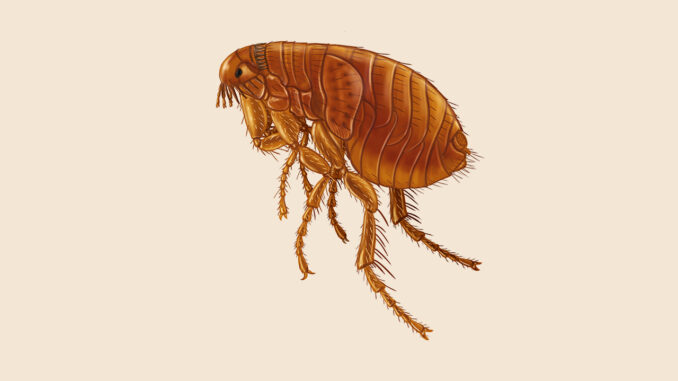
Common Diseases Spread by Fleas in Zimbabwe: A Comprehensive Overview
Worried about common diseas spread by fleas in Zimbabwe? Call 0772593344 for affordable, reliable and proffessional flea control services.
Fleas are tiny, wingless insects that are notorious for their parasitic nature. While often considered a mere nuisance, fleas in Zimbabwe, as in many other parts of the world, can act as vectors for several serious diseases, impacting both human and animal health. Understanding these diseases and implementing effective preventative measures is crucial for maintaining public health in the country. This post will delve into the common flea-borne diseases found in Zimbabwe, exploring their transmission, symptoms, prevention, and treatment.
Common Diseases Spread by Fleas in Zimbabwe
These are the common diseases spread by fleas in Zimbabwe
1. Murine Typhus (Endemic Typhus):
Murine typhus, caused by the bacterium Rickettsia typhi, is a significant concern in Zimbabwe. Fleas, particularly those infesting rats (hence “murine”), are the primary vectors. Infected fleas transmit the bacteria to humans through their feces, which can then enter the body through scratches, bites, or mucous membranes.
Symptoms: Murine typhus typically presents with a sudden onset of fever, headache, chills, muscle aches, and rash. The rash, often appearing on the trunk and extremities, is a characteristic feature but may not always be present. Severe cases can lead to pneumonia, encephalitis (brain inflammation), and even death.
Transmission: The primary route of transmission is through flea bites, but it’s important to note that direct contact with infected rat feces is also a potential risk factor.
Prevention: Controlling rodent infestations populations is crucial for preventing murine typhus. Engage Pest Portal Zimbabwe, the pest control company to deal with the rat problem. At Pest Portal, we offer affordable, reliable and professional rodent control services and programs that keep your problem at bay. People should also maintaining clean and sanitary living environments, eliminating food sources that attract rodents. Flea control on pets and in homes is equally important. At Pest Portal Zimbabwe, we also offer flea control services that eliminate the problem
Treatment: Doxycycline is the antibiotic of choice for treating murine typhus. Early diagnosis and treatment are essential for minimizing complications and ensuring a favorable outcome.
2. Plague (Bubonic Plague):
While less common in Zimbabwe than murine typhus, plague remains a potential threat. The bacterium Yersinia pestis is responsible, and fleas play a crucial role in transmission. Fleas that have fed on infected rodents carry the bacteria and transmit them to humans through bites.
Symptoms: The most common form of plague is bubonic plague, characterized by swollen, painful lymph nodes (buboes), usually in the groin, armpits, or neck. Other symptoms include fever, chills, headache, weakness, and muscle pain. If left untreated, bubonic plague can progress to septicemic plague (infection of the bloodstream) or pneumonic plague (infection of the lungs), both of which are life-threatening.
Transmission: Primarily through the bite of an infected flea. Pneumonic plague can also spread from person to person through respiratory droplets.
Prevention: Similar to murine typhus, controlling rodent populations is key. Prompt treatment of infected individuals is crucial to prevent the spread of the disease. Personal protective equipment (PPE) should be used when handling potentially infected animals or their remains.
Treatment: Streptomycin, gentamicin, and tetracycline are effective antibiotics for treating plague. Early diagnosis and treatment are vital for survival.
3. Tularemia:
Tularemia, also known as rabbit fever, is another disease that can be transmitted by fleas, although this is less common than transmission through ticks or direct contact with infected animals. The causative agent is Francisella tularensis, a bacterium found in various animals, including rodents.
Symptoms: Tularemia can manifest in various forms, depending on the route of infection. Ulceroglandular tularemia, the most common form, presents with a skin ulcer at the site of the bite or scratch, accompanied by swollen lymph nodes. Other forms include glandular, oculoglandular, oropharyngeal, and pneumonic tularemia.
Transmission: Fleas can transmit tularemia through bites, although other vectors, including ticks and direct contact with infected tissues, are more common.
Prevention: Avoiding contact with potentially infected animals and their habitats is essential. Wearing protective clothing when handling animals or working in areas where the bacteria may be present is recommended. Flea control on pets and in the environment is also important.
Treatment: Streptomycin and gentamicin are commonly used to treat tularemia.
Conclusion:
Fleas pose a significant public health risk in Zimbabwe, serving as vectors for several potentially life-threatening diseases. Effective strategies for prevention and control are crucial. These include comprehensive rodent control programs, diligent flea control on pets and in homes, public health education campaigns to raise awareness about flea-borne diseases, and prompt medical attention when symptoms appear. Collaboration between public health officials, veterinarians, and the community is essential in mitigating the risks associated with these diseases. Further research into the prevalence and distribution of these diseases in specific regions of Zimbabwe is also crucial for tailoring preventative measures and improving public health outcomes.


